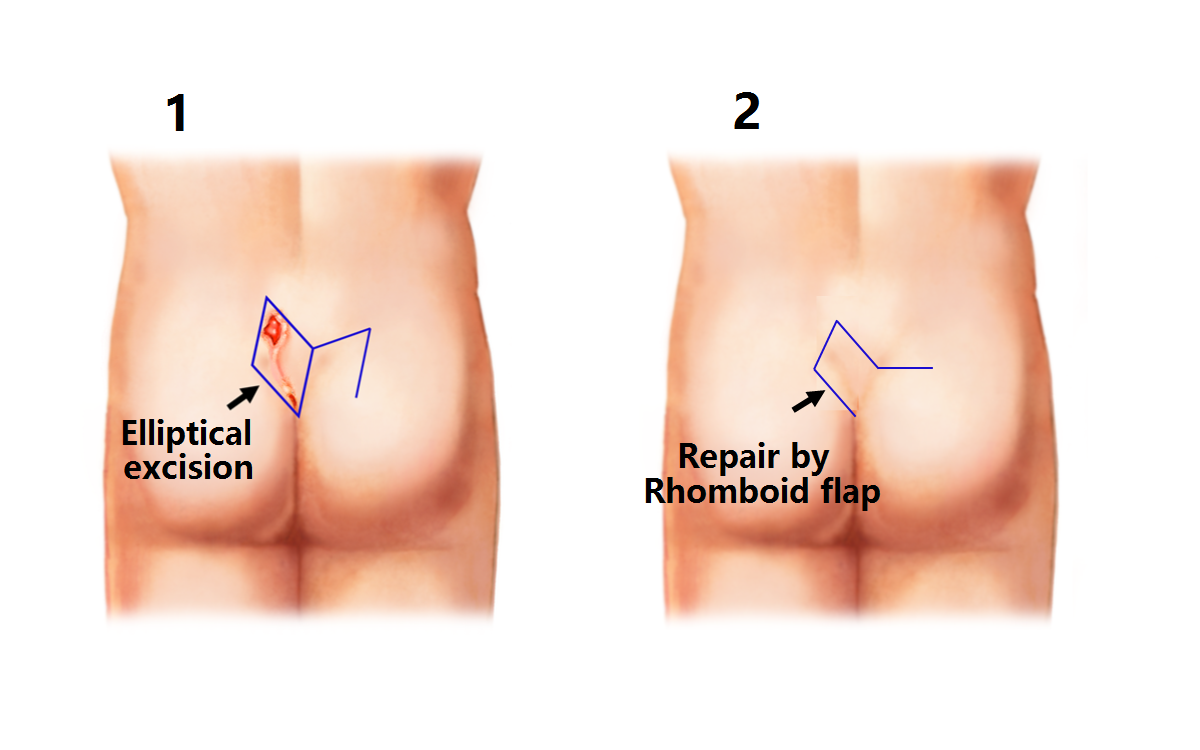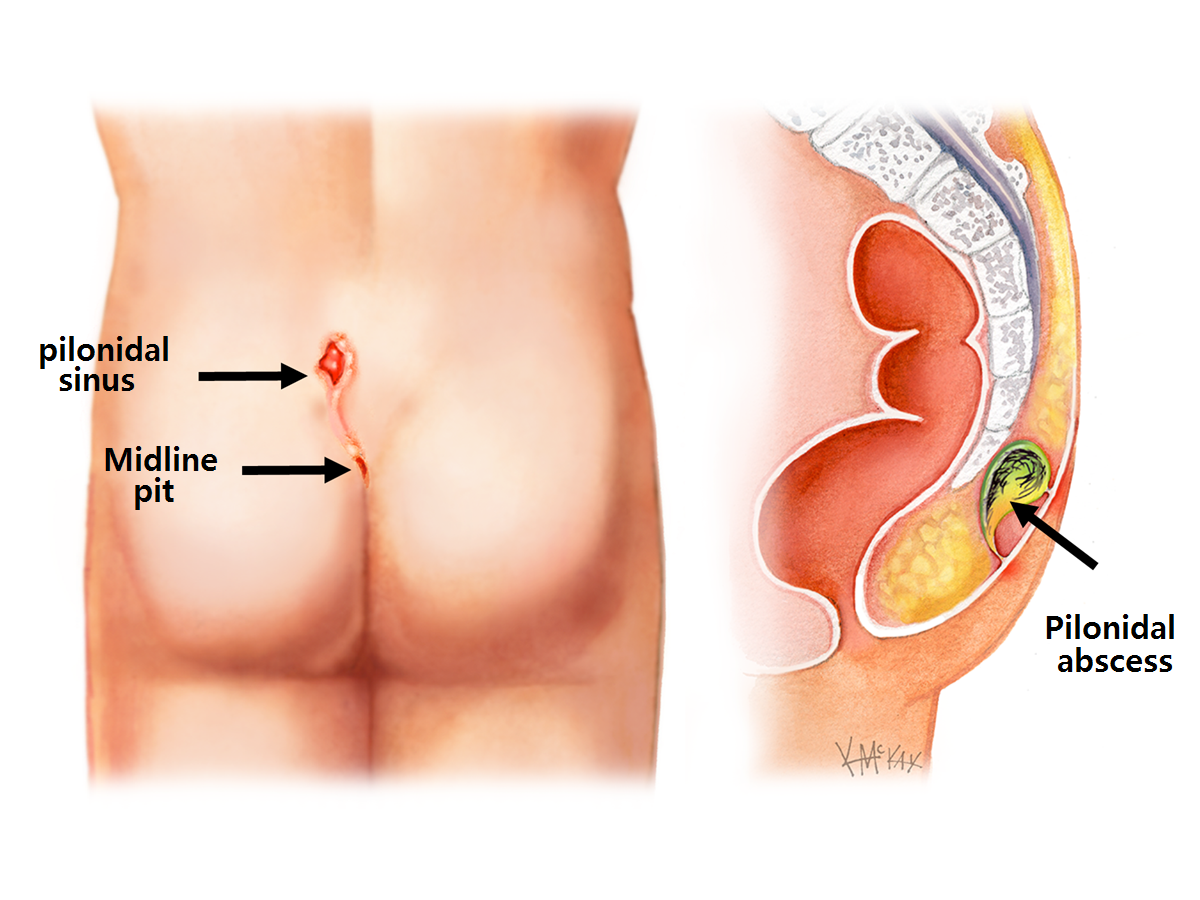Pilonidal Sinus
Presentation
Typically, it results in discharge of pus and fluid, sometimes blood, from a small opening in the crack between the buttocks, usually in the midline. Occasionally, it will present as an abscess that becomes red, hot and very tender, and if not surgically drained, may even spontaneously rupture.
What causes pilonidal sinus?
The three factors that predispose to pilonidal sinus include the presence of a congenital pit in the midline, a deep gluteal cleft, and hair in the buttock region. Strategies to reduce risk of pilonidal sinus attacks must address each of these three factors.
Hair removal strategies
Use of depilatory creams, laser or frequent shaving of the midline buttock region have all been shown to prevent recurrence of pilonidal sinus in those who have experienced a previous attack.
What are the causes of a pelvic organ prolapse?
A prolapse is caused by the continuous weakening of the supporting tissues of the pelvic organs. This weakening may be caused by:
- Chronic cough or strain from constipation
- Collagen deficiency
- Congenital (present at birth) weakness of the pelvic floor muscles, ligaments and fascia
- Menopause – The supporting tissues become weaker with age and menopause
- Obesity, large fibroid (fibrous growth), tumour or previous pelvic surgery
- Pregnancy and childbirth, especially after a difficult and prolonged labour
- Strenuous physical work or heavy lifting
What are the symptoms of a pelvic organ prolapse?
- A dragging sensation in the lower abdomen and pelvis
- A swelling sensation in the vagina or a lump outside the vagina
- Backache that progresses through the day
- Difficulty in or inability to have sex – this may cause anxiety or depression
- Difficulty in passing urine or stools
- Difficulty in walking or sitting
- Vaginal bleeding and discharge (not part of the menstrual cycle)
Surgery for pilonidal sinus
Surgery is indicated for recurrent pilonidal sinus. Surgery is aimed at removing the sinus along with the associated congenital pit, and flattening the gluteal cleft to prevent a recurrence. There are many operations for pilonidal sinus, indicating that none are 100% effective. Most have a success rate of greater than 90%, with wound breakdown occurring in up to 5-10% of cases. Excision of the pilonidal sinus with repair by Rhomboid flap is ideal for large pilonidal sinuses, with the lowest recurrence rate.


